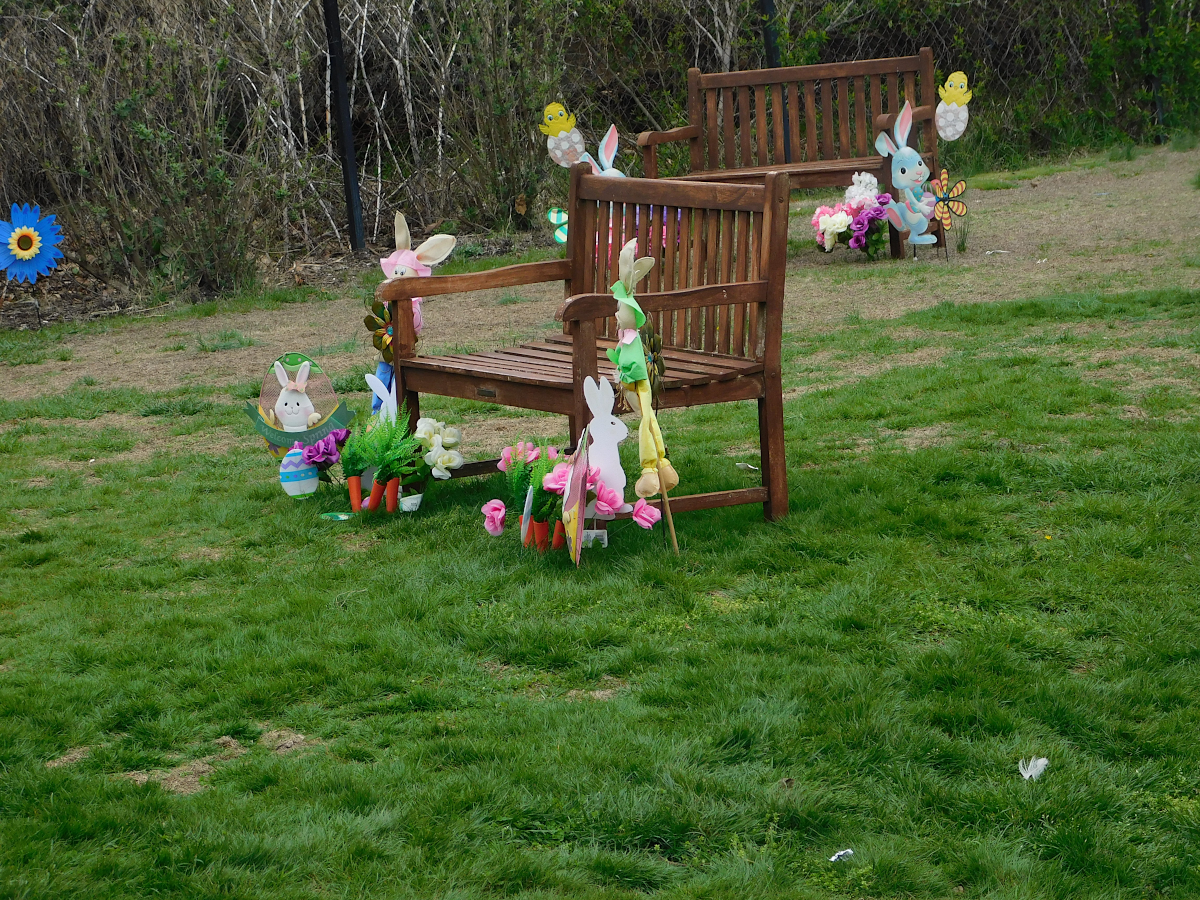A couple of weeks ago I published a
post in this community that featured the Cold Spring Harbor Fish Hatchery, in Cold Spring Harbor, New York. This week I returned to the Hatchery with my husband to take some pictures I wasn't able to snap on my previous visit.
It's just two weeks since my last visit, but already I noticed changes. Things move fast in springtime. For example, there were few people at the hatchery at my earlier visit. The other day there were many visitors. Turtles were little in evidence on my earlier trip. The other day, they were climbing on top of each other.
Here is a little turtle climbing on a big one.
Here is a big one, climbing on a smaller one. Is he stealing the sun, or preparing to mate? :) I don't know. Spring is mating season for turtles.
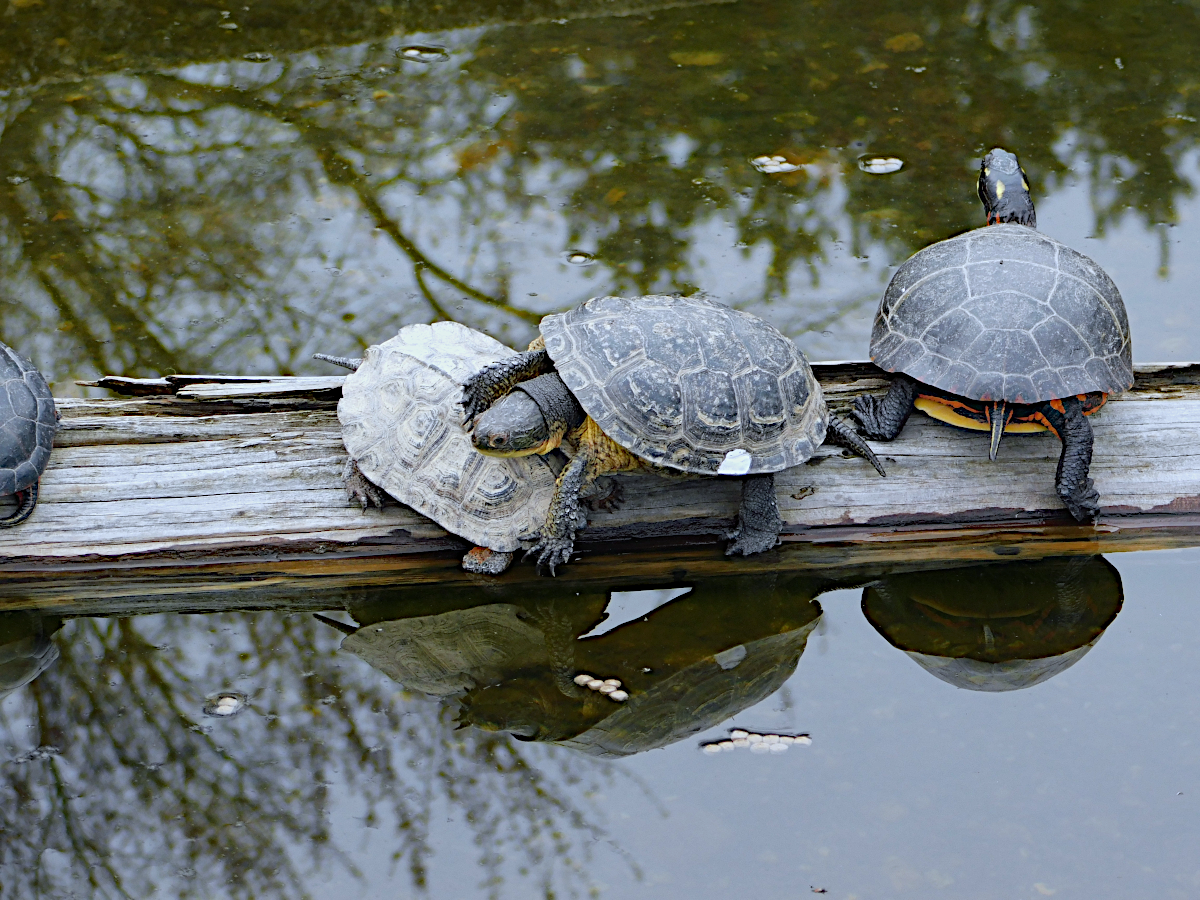
The fish hatchery is comprised of a system of ponds and pools. The health of the water is constantly maintained. Below are a few pictures that show how some of the ponds are connected. Also, how the freshness of the water is ensured.
Pond Aeration at the Fish Hatchery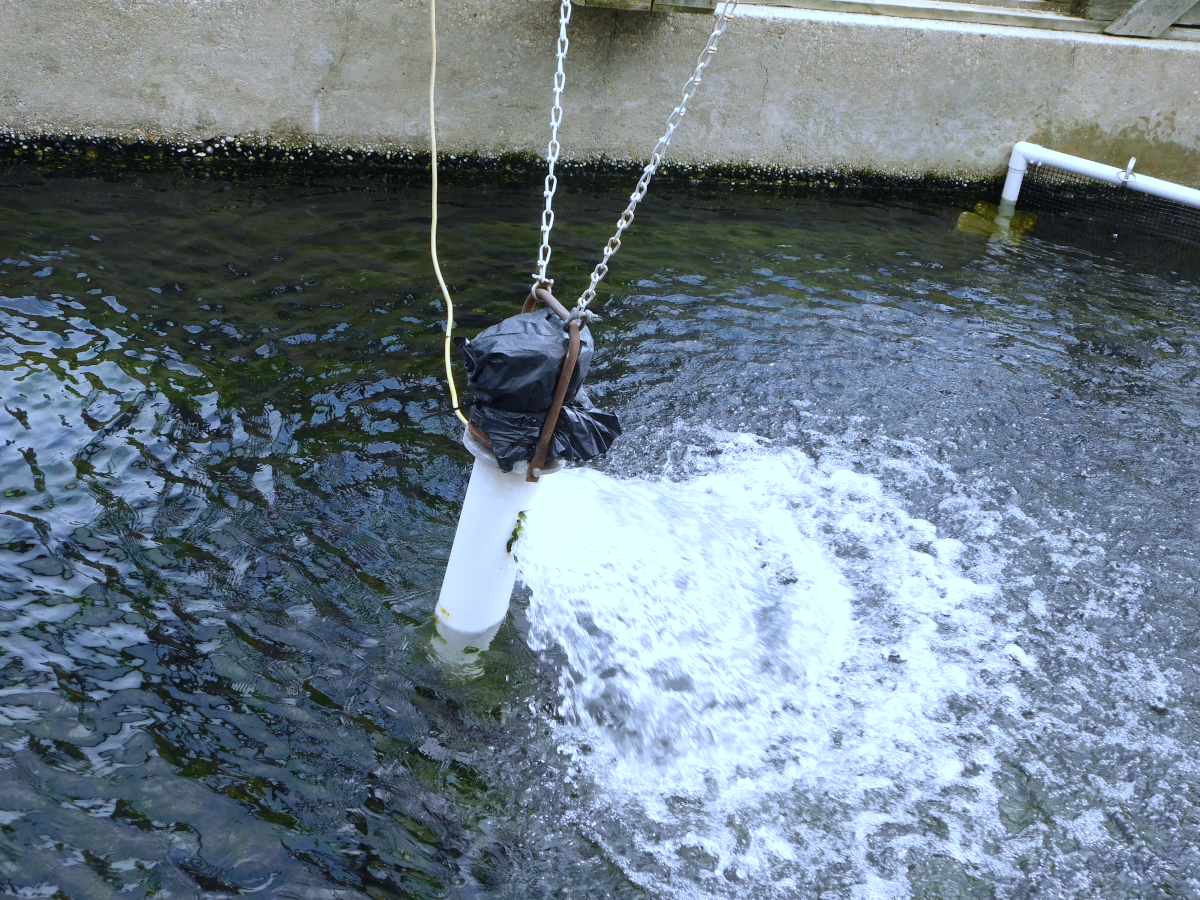
I guessed at the purpose of these water-spouting fixtures, but asked an attendant for clarification. She confirmed that these keep the water in fish ponds fresh through aeration and replenishment.
Channel Connecting Fish Ponds
Some of the ponds in the network at the Cold Spring Harbor Fish Hatchery are connected by channels, such as the one pictured above.
In the picture below you can see one of the connectors between the ponds that facilitates the passage of water and blocks the movement of the animals contained within.
One of the ponds is not for fish, but turtles. Here are some of the smaller turtles sunning themselves on logs.
Turtles on a Log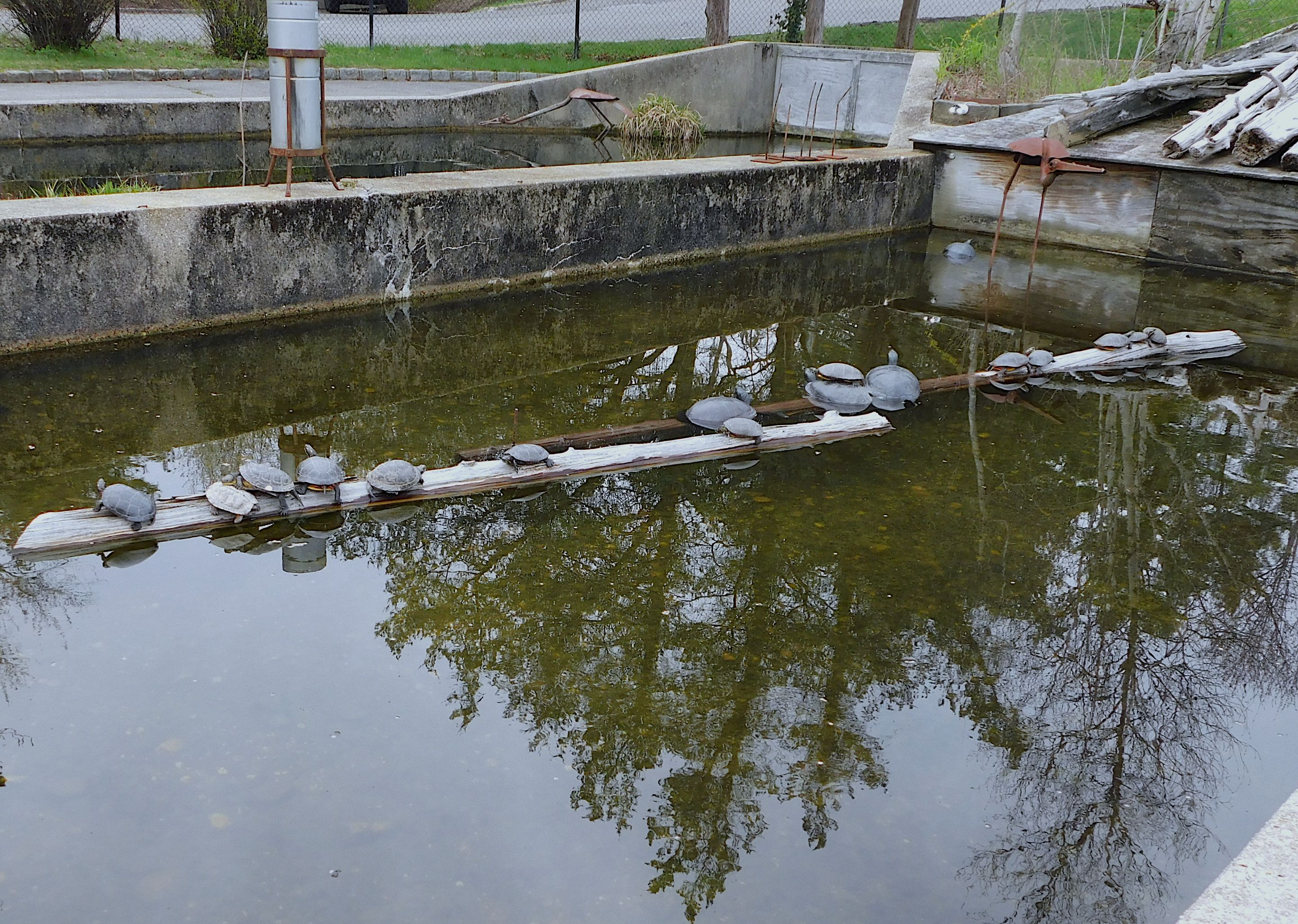
Here are some of the larger turtles sunning themselves on a board.
One turtle was hanging out all by itself, partially submerged. I'm not sure that turtle got enough sun in that location. Sunning is an important part of turtle health, because they are cold-blooded (
ectothermic). The animals need a certain amount of sunlight in order to carry on life processes--also to absorb essential vitamin D3.
Looming over the fish ponds is a macabre sight: birds of prey. These raptors perch in trees and swirl around overhead, hoping, no doubt, to feed on animals in the ponds.
Raptors Lurking in Trees Around Fish Ponds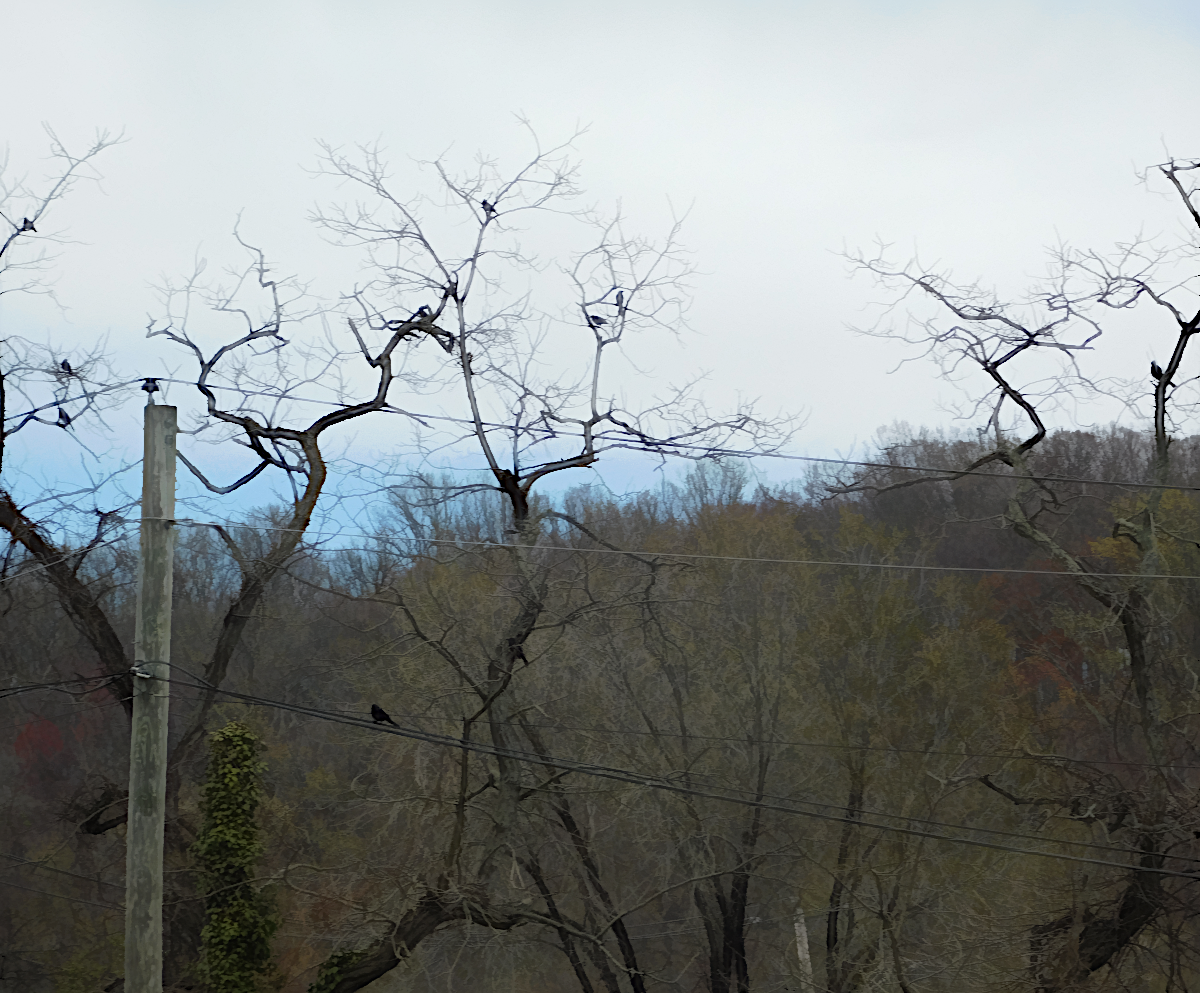
I first noticed these dark shadows circling in the sky that last time I visited the Fish Hatchery. They seemed to be more numerous the other day, almost menacing as they looked for opportunity. The fish ponds are covered with steel webbing to protect the fish from these predators. I'm not sure the frogs and turtles at the hatchery are protected. Raptors on Long Island do
feed on turtles and other small aquatic life.
Osprey?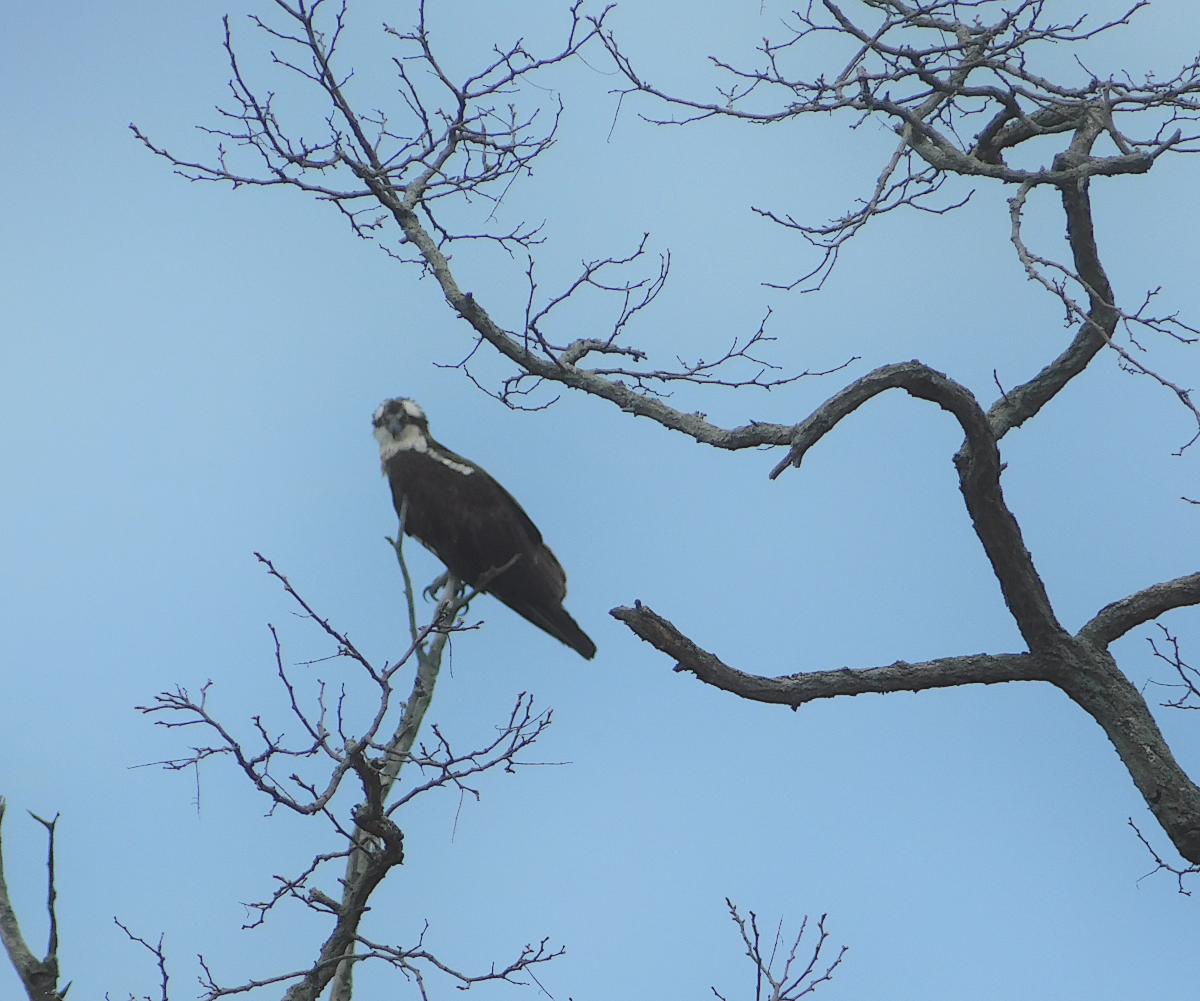
My son helped me identify this one. Here (below) is a picture of an osprey from Wikimedia Commons, attribution: "Mike" Michael L. Baird. Used under

. Spring and summer are
breeding season on Long Island, NY (where I live) so these birds are busy getting ready to build their families now. That may explain their activity. They migrate south in fall and winter
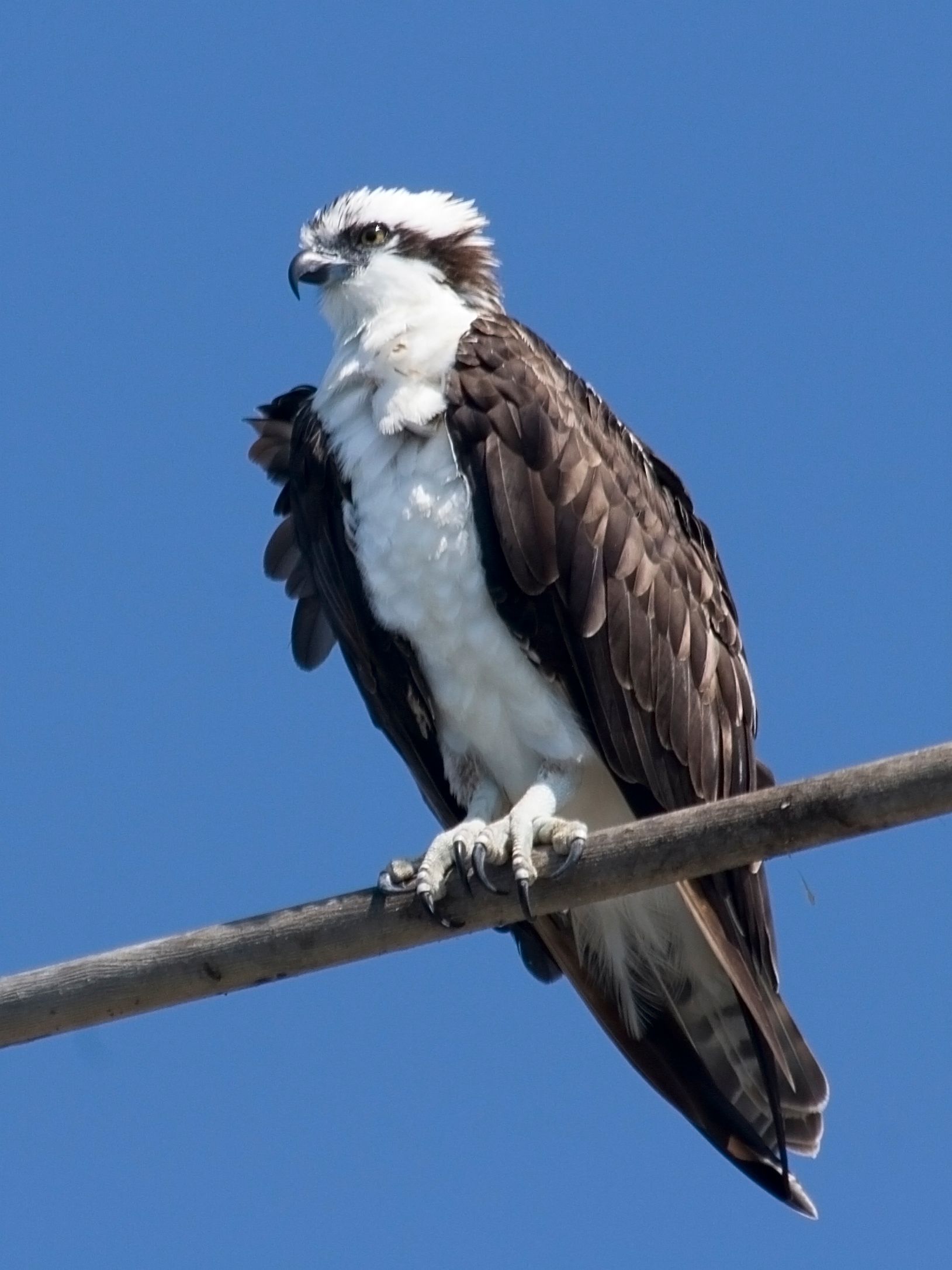
Rare White Harrier?
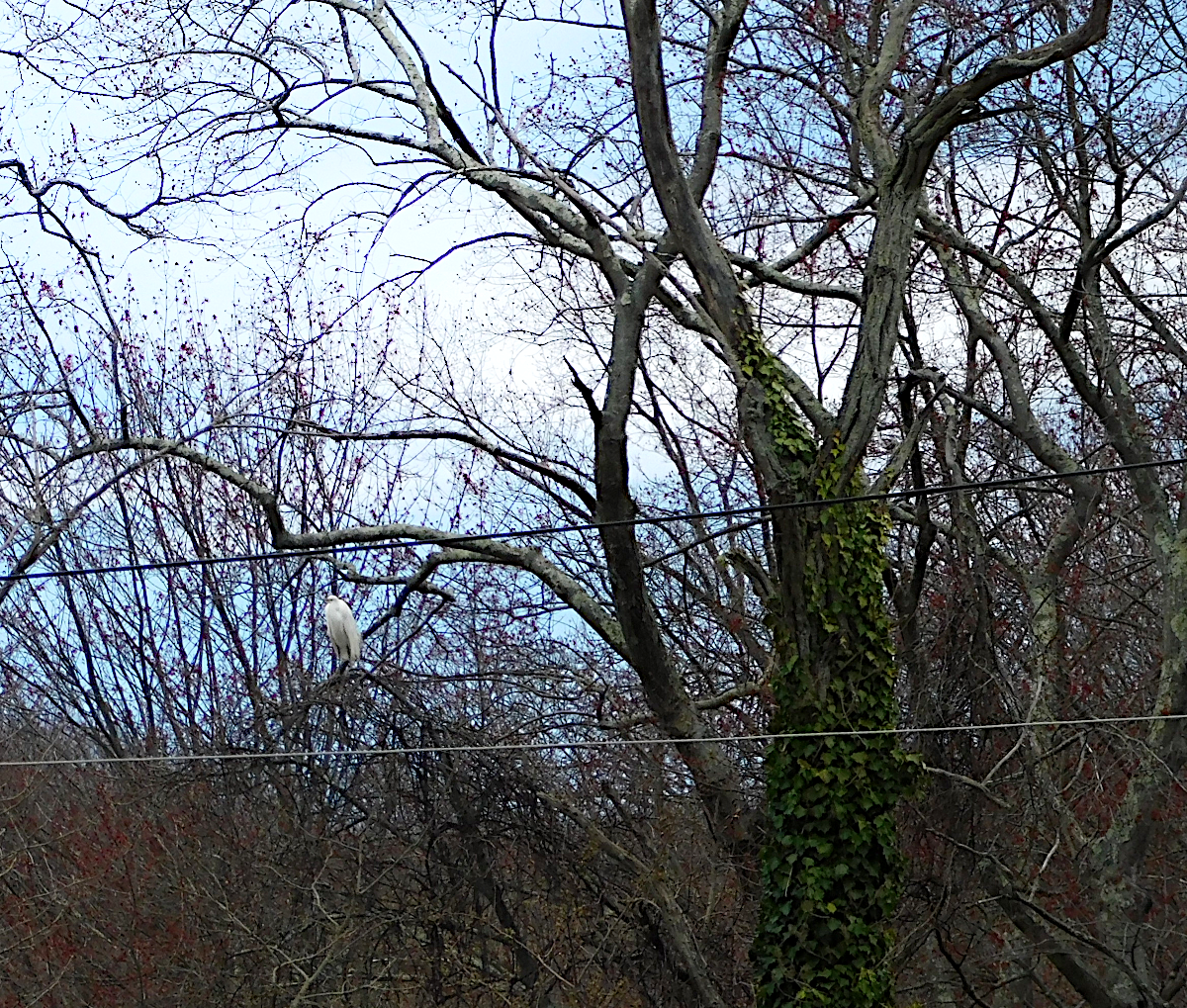
According to
Google AI: Northern Harriers can be white. Specifically, adult male northern harriers are known for their pale gray upperparts and white underparts. They are often described as having a "ghostly white" appearance. Readers are invited to identify this bird, if it is not a northern harrier. I would appreciate the feedback.
Here is a closer image of the unidentified white raptor:

I extracted this from the larger picture.
The hatchery not only has outdoor ponds and exhibits, but also has an exhibit hall where live animals are maintained.
The animals on exhibit represent amphibians, reptiles and fish that may be found in the area. The pictures below were snapped indoors, at the exhibits. I tried to get clear shots through glass and water but was not always able to do this.
Northern Diamond Back Terrapin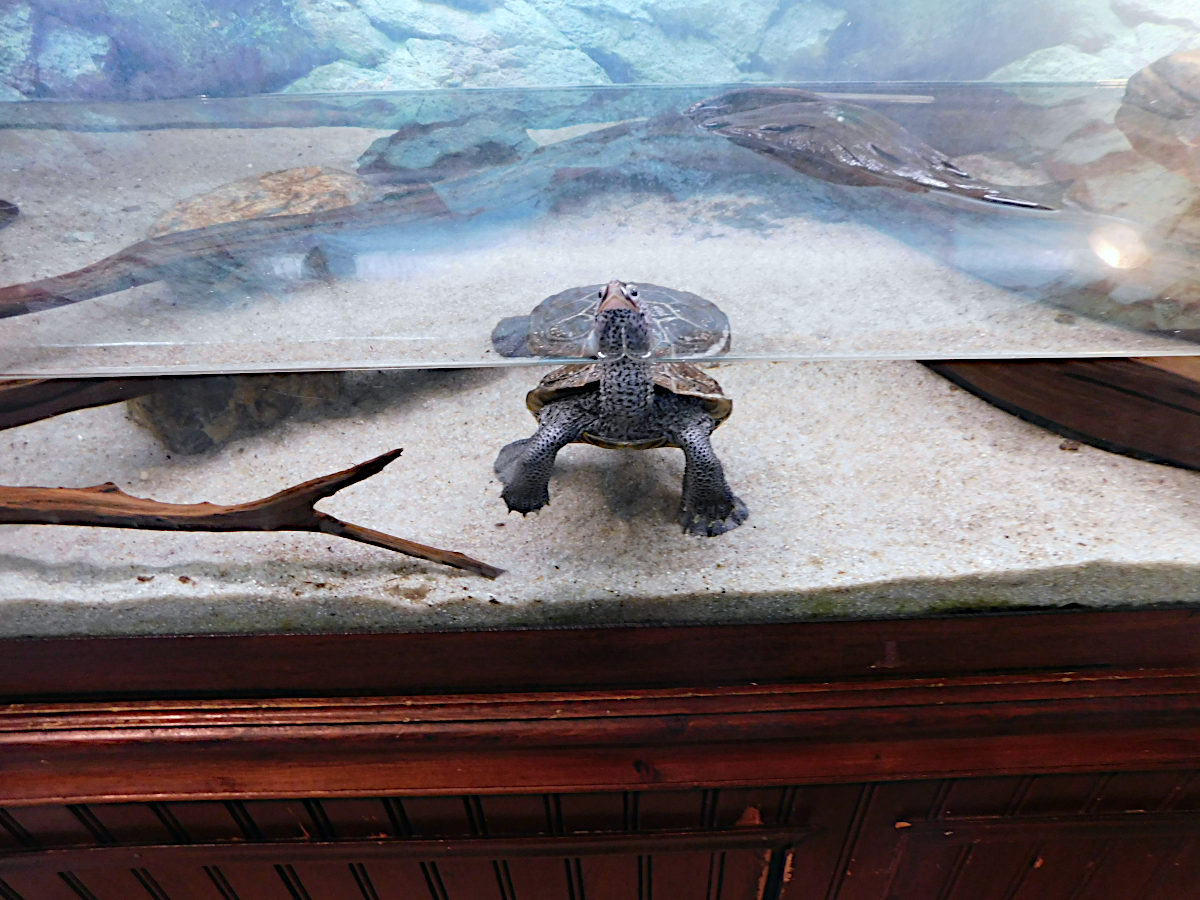
(The following information is derived from a
New York State government website). The northern diamond back tarrapin is the only turtle species in North America that lives in brackish (less salty then sea water) water. The turtle used to be favored for turtle soup. Today it is against the law to capture the northern diamond back terrapin at any stage of its life. Left alone, and with good luck (avoiding cars and predators, for example) the turtle can live between 25 and 40 years. It feeds on live prey such as fish, clams and worms, and it also feeds on carrion. An interesting fact: the turtle excretes excess salt from a gland located by its eyes.
Here is a side view of the same turtle.
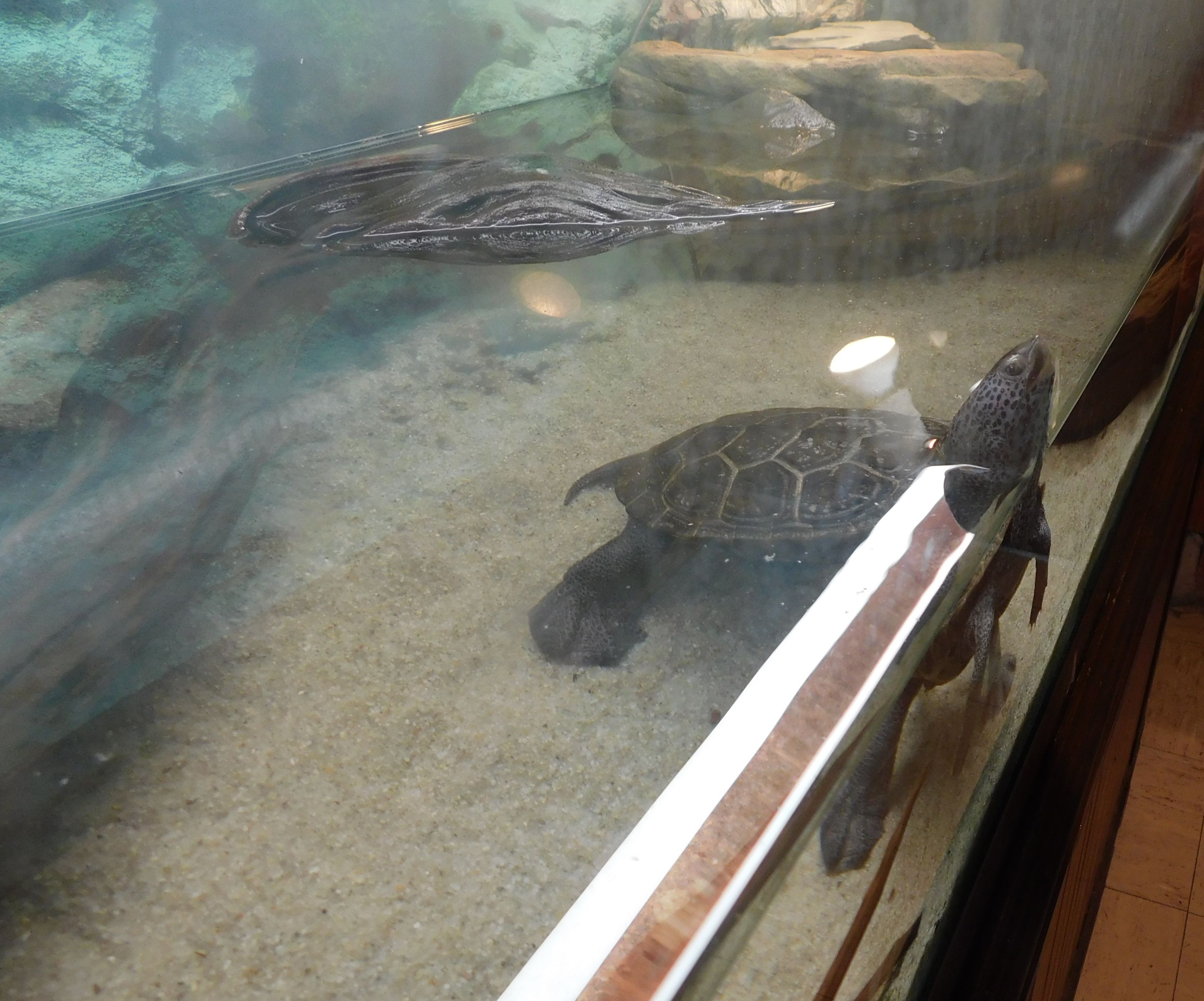
Spotted Turtle (Clemmys guttata)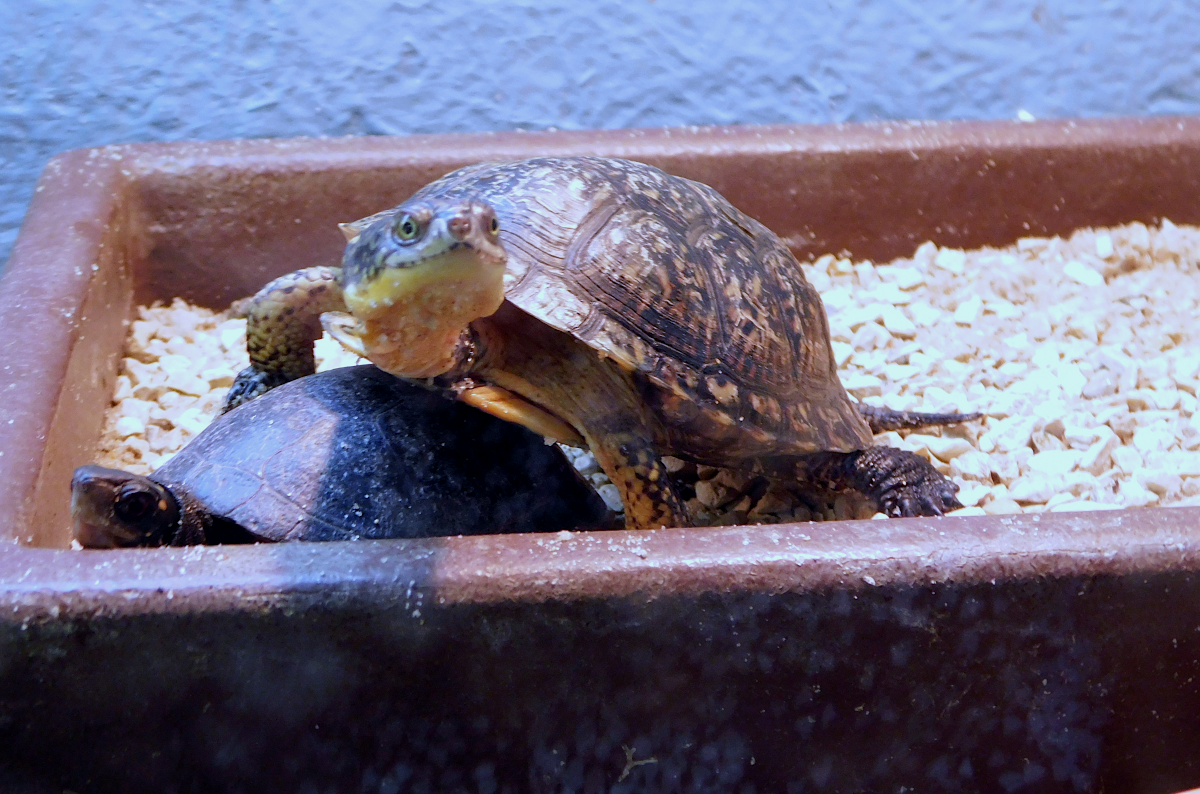
This small turtle
lives in freshwater wetlands. The turtle resides " along the coastal plain" that stretches from Canada to Florida. This is a semi-aquatic
animal and is a species of "special concern" in New York. Besides habitat loss, one reason for the declining population is death by vehicle (!).
Snapping Turtle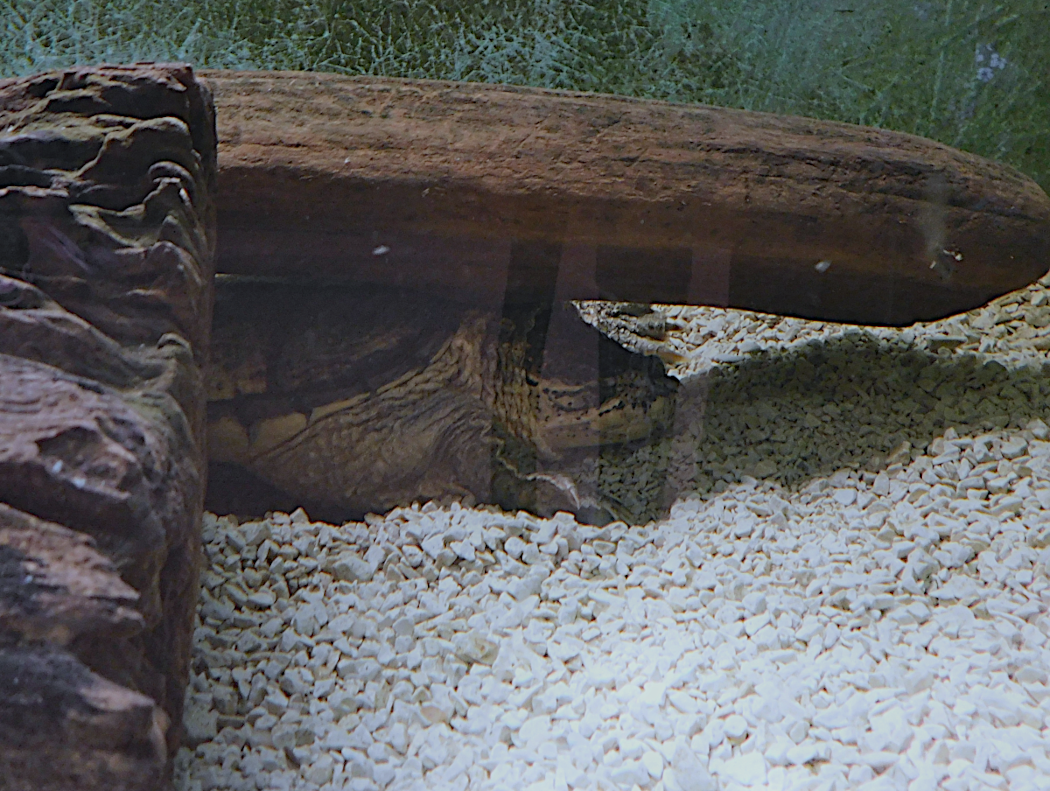
The snapping turtle is New York State's official
state reptile. When I was a child in a rural area of New York, I was warned to keep away from snapping turtles. One bite and a snapping turtle can take a finger. However, I never saw one of these turtles.
According to a
New York State government site, snapping turtles are omnivores. They eat carrion, live prey and vegetable matter. They are considered important to the environment because they keep it clean of rotting material.
Junior, Taxidermied Snapping Turtle--Largest in the Country?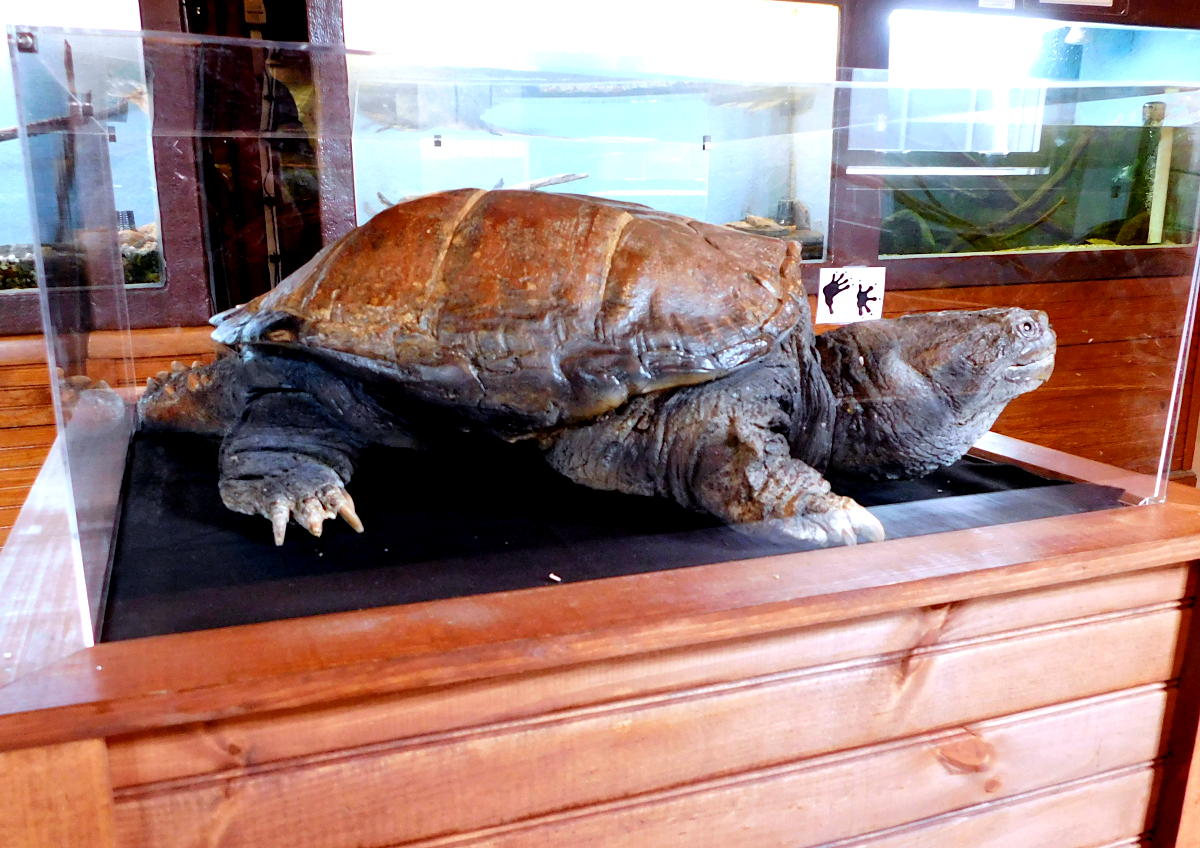
In 1998 local hooligans kidnapped an 84-year-old snapping turtle known as Junior, from the Cold Spring Harbor Fish Hatchery. Junior was touted as the largest snapping turtle in the country. No one knows if that boast was actually true. What was true was that Junior was rescued, but not in time. He died shortly afterwards. The picture shown here is of Junior, preserved through taxidermy.
In the picture below I revisit a species featured in my last post about the hatchery: the black rat snake. That earlier post had two pictures of the snake, but neither showed the reptile in its entirety. As I explained then, this snake is not venomous, and not considered dangerous to humans. However it can grow to 8 feet and it kills by constriction. This week the snake was resting in all its glory on a prop. I couldn't resist taking a picture. It really is a beautiful snake...at a distance. I doubt this one is eight feet long, though.
Black Rat Snake...the Whole Snake!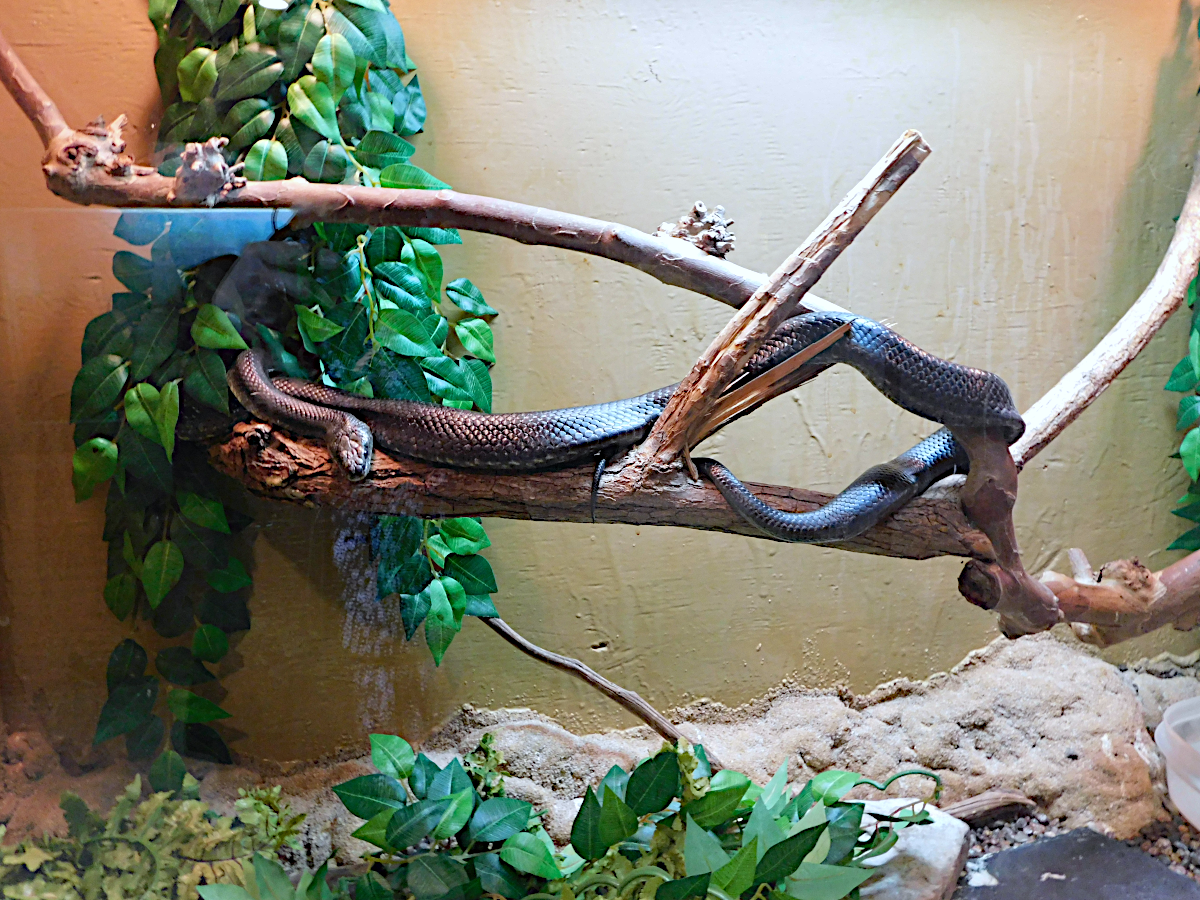
Most of the pictures taken in the indoor exhibit did not come out very well because the animals were behind glass, or were underwater and behind glass. Often the glass was scratched and the lighting was intense. The black rat snake had a really nice viewing case and so the pictures I shot of this animal came out pretty well.
The picture below was of a fast moving fish, the chain pickerel, so I had to take many shots to get an image that was reasonably clear.
Chain Pickerel
Apparently, fishers like to catch this fish because
it fights back (!!!). I guess the struggle for life is appealing to these fishers. Anyway, this fish can be found in fresh water. It likes
"vegetated lakes, ponds and slow-moving rivers". Redfin Pickerel
The following information is from
guidesly.com. This fish, and the one referred to above (the chain pickerel) are members of the pike family. The redfin pickerel is a smaller fish and is distinguished by its red fins (which I don't see in my picture). Here is a picture from Wikimedia Commons (credit: Oakridge National Laboratories,

) that shows its typical size and the red fins.
This fish also lives in fresh water, vegetated areas. It is known as an ambush predator. This fish has really large eyes that presumably help it detect its prey. The redfin pickerel waits for a smaller creature (insect larvae, crayfish, etc.) and jumps out at it. The oldest recorded redfin pickerel was 8 years old (how do they measure that, I wonder).
The fish in my next picture is an interesting creature. I could barely get a shot because it was hiding under a rock. However, I got its face, and that is the most interesting part of this fish's appearance, I think.
Margined Madtom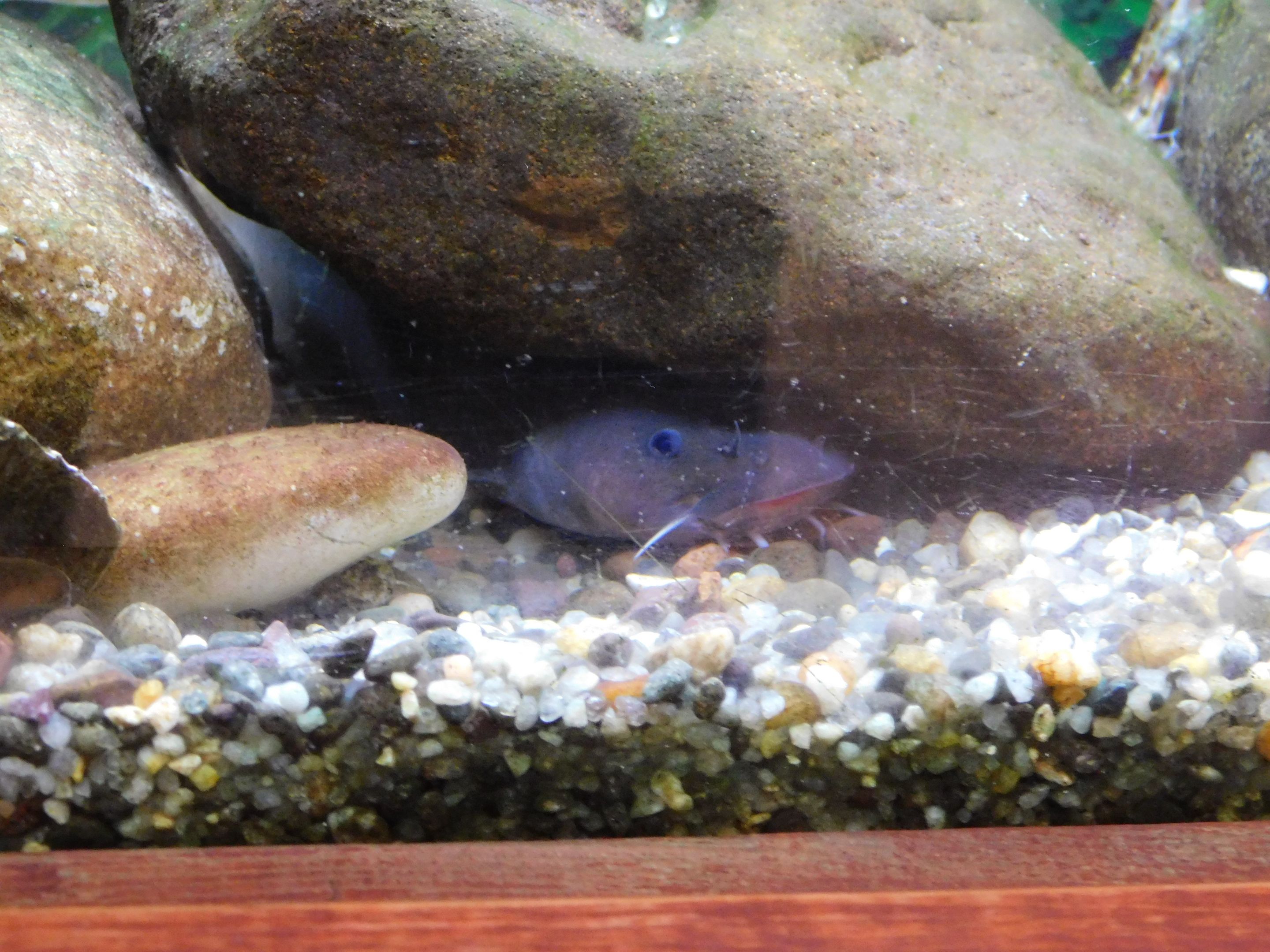
The margined madtom is a catfish. It is apparently used as bait for larger fish. (The following information is from
fishbase.se)). This is a freshwater fish common in North America. It's a little under 6" long, and prefers to hunt at night. Its favorite time seems to be around midnight. This probably explains why the margined madtom is hiding in the dark at the exhibit.
Here is a
YouTube video that shows the actual size and appearance of this tiny fish.
https://www.youtube.com/shorts/bczjGGQ2d-II love the next picture. It shows a bullfrog partially submerged under water and looking at me (or at least I think he is).
Bullfrog
(The information here is derived from the
NY.gov site). The bullfrog is New York State's largest frog, reaching sometimes 8" in length. The frog likes to live along the edges of shallow water, and may live from
6 to 10 years. Here is a video that allows us to hear the bullfrog's trademark call. According to the person who shot the video, the call is intended to mark territory or to attract a mate.
 https://www.youtube.com/watch?v=QukK4nM9OpA
https://www.youtube.com/watch?v=QukK4nM9OpA I actually have more pictures of fish, but I'll save them for another time. Before I end, I'll show a couple of photos of Easter decorations that were on display for the hatchery's annual Easter Egg Hunt.
Bunnies and Carrots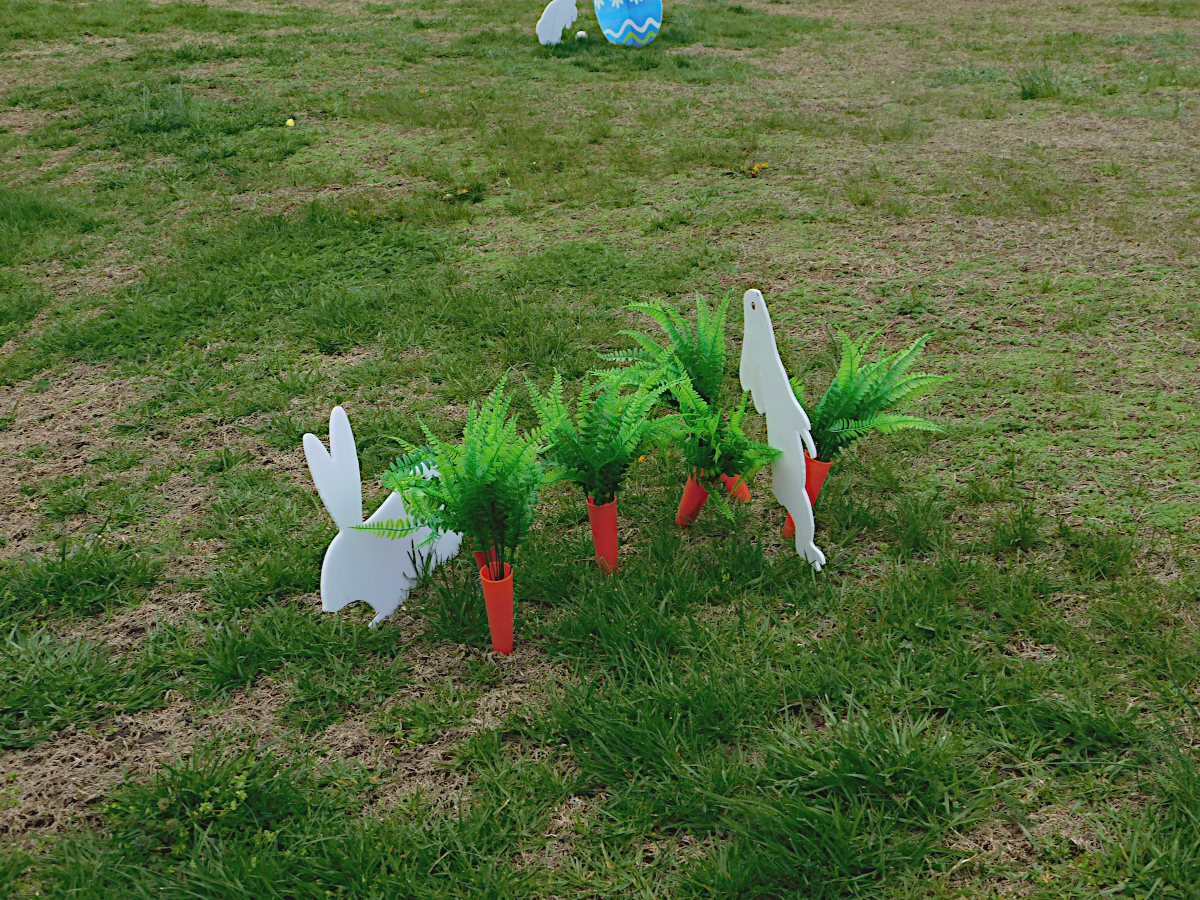
There were a lot of children at the hatchery the other day. Although it was a Monday, the kids were off for Spring vacation. Here's another shot of Easter decorations. I can imagine where the eggs might be hidden there.
And another display, possible hiding site for Easter eggs.
The Cold Spring Harbor Fish Hatchery is not large, but one could easily spend a couple of hours there. Besides the hatchery, there is a lovely pond that is connected by water to the complex. Maybe in another blog I'll take a look at that lake. St. John's Episcopal Church, a piece of Long Island's history, is associated with the lake.
I hope you enjoyed this excursion. Thank you for reading. Peace and health to all.
*** All photos, unless otherwise noted, were taken by me at the Cold Spring Harbor Fish Hatchery.
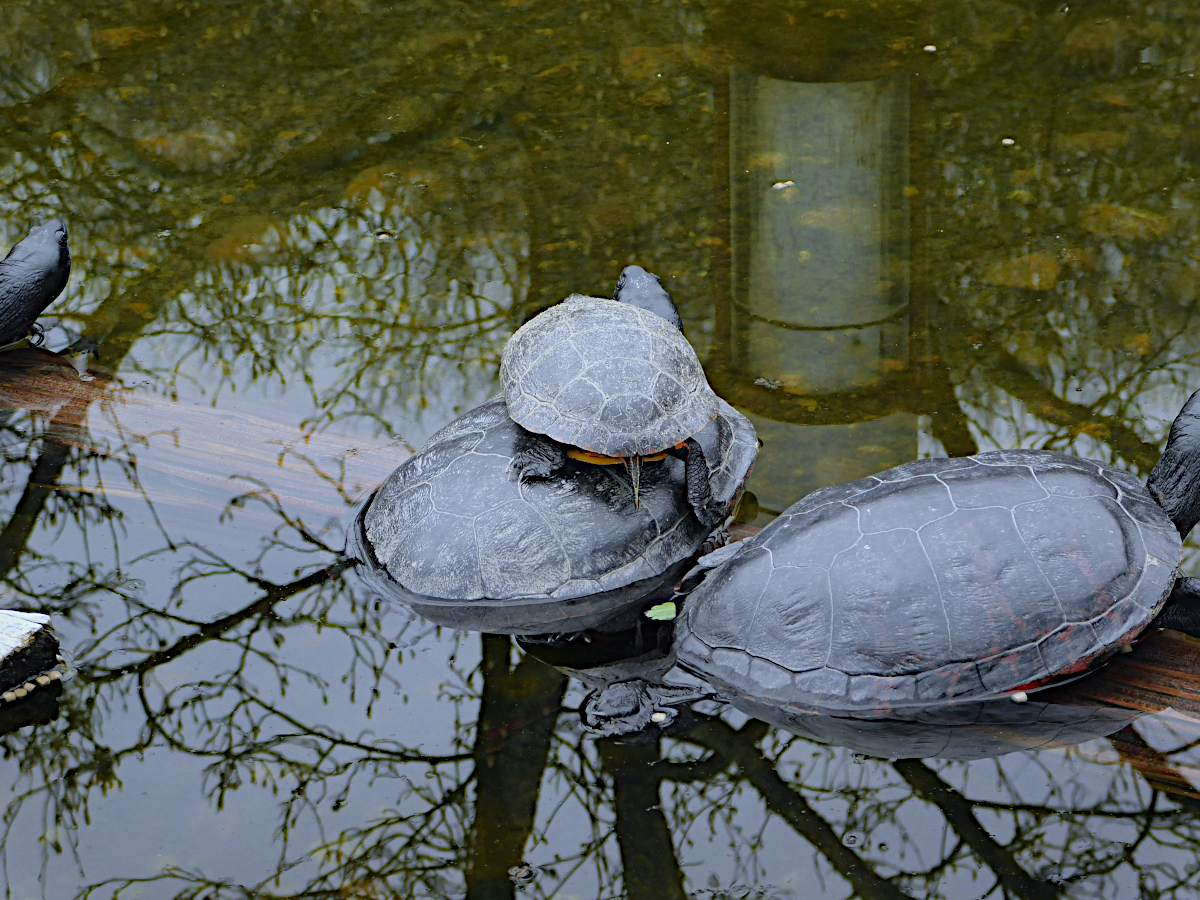



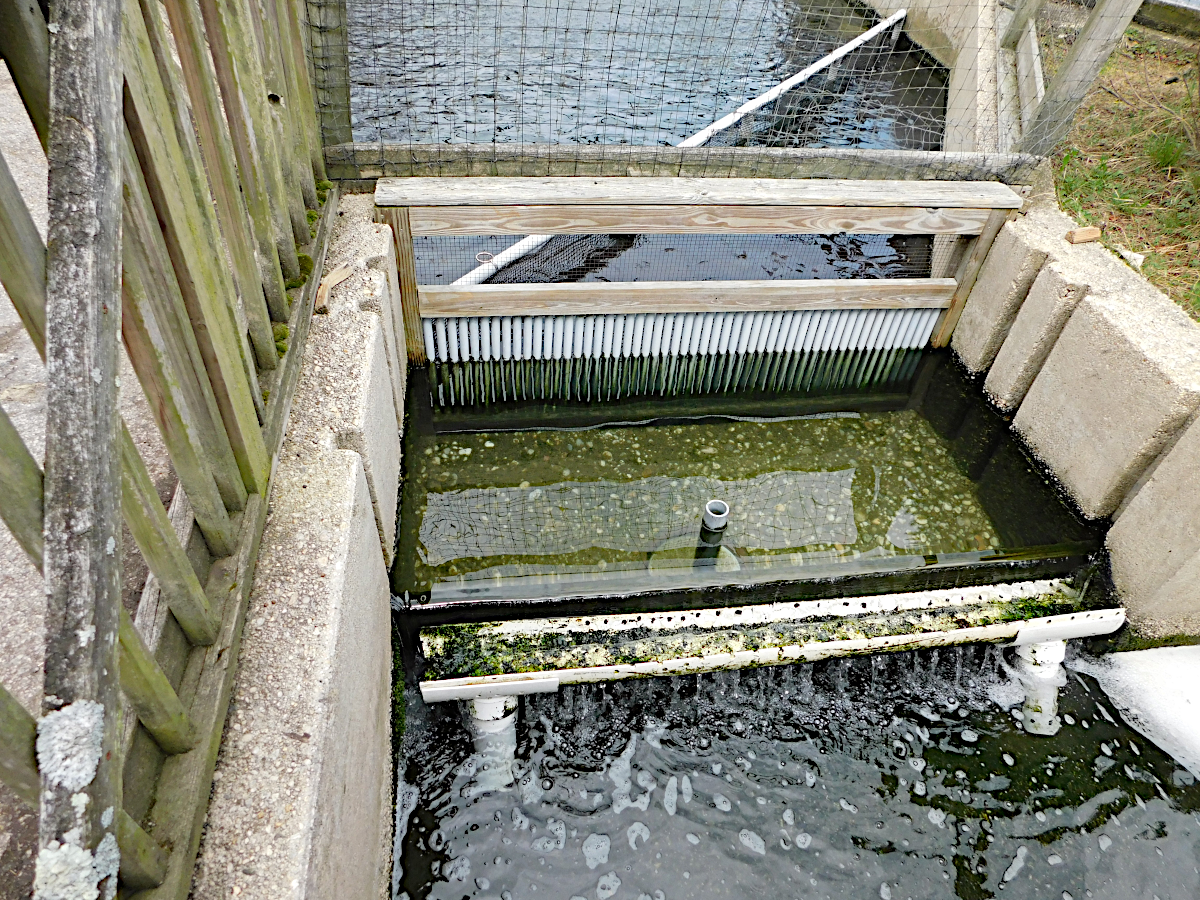

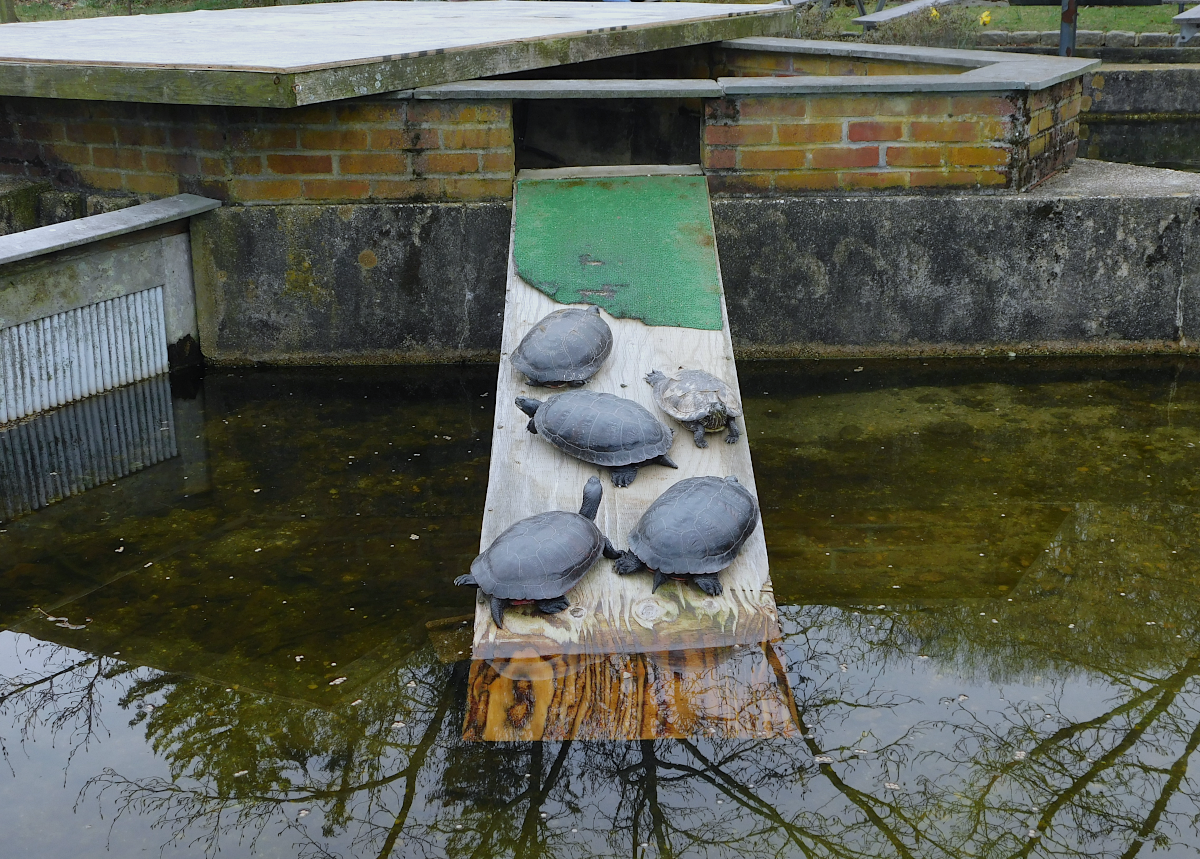



 . Spring and summer are breeding season on Long Island, NY (where I live) so these birds are busy getting ready to build their families now. That may explain their activity. They migrate south in fall and winter
. Spring and summer are breeding season on Long Island, NY (where I live) so these birds are busy getting ready to build their families now. That may explain their activity. They migrate south in fall and winter 


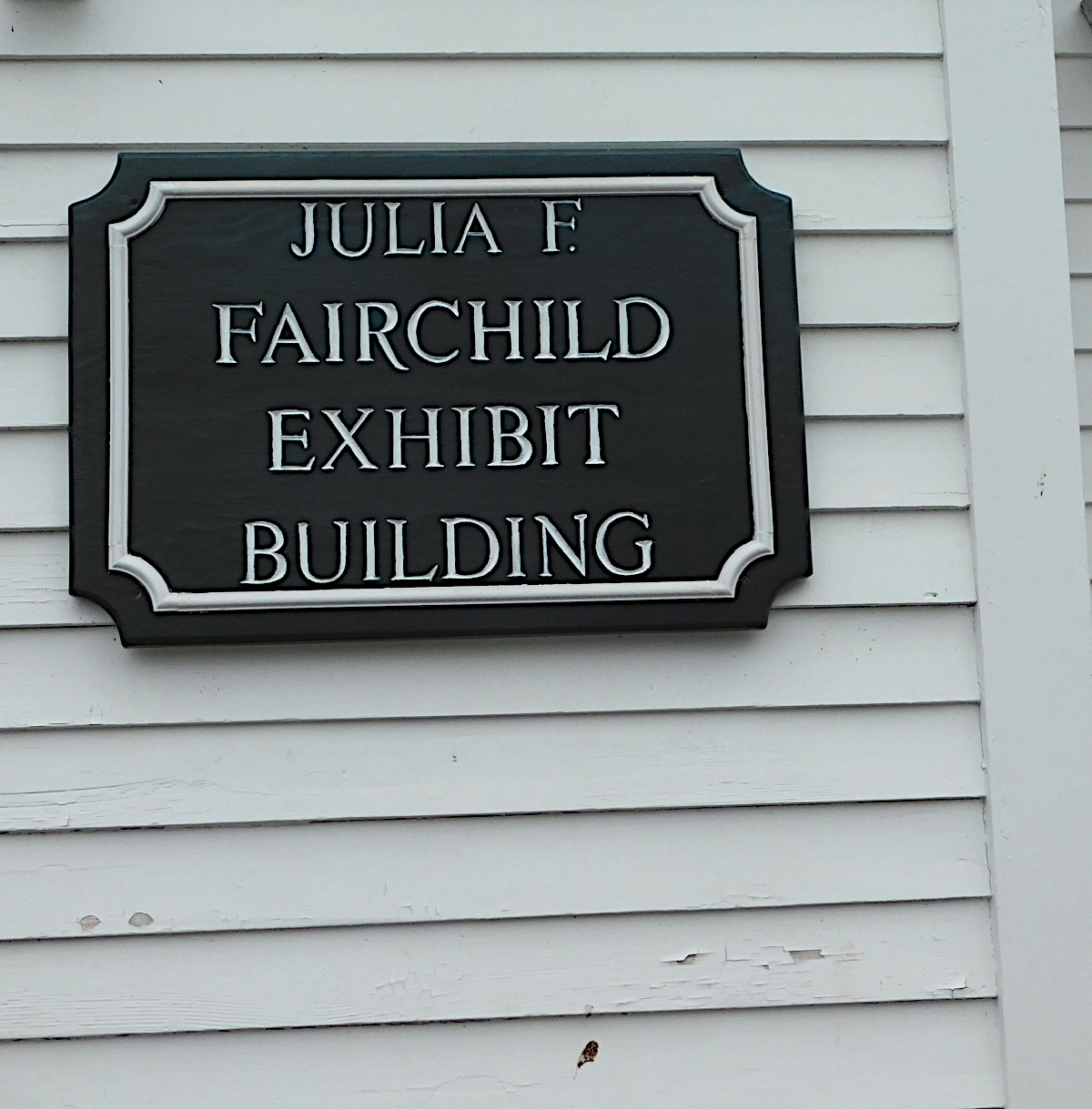








 ) that shows its typical size and the red fins.
) that shows its typical size and the red fins.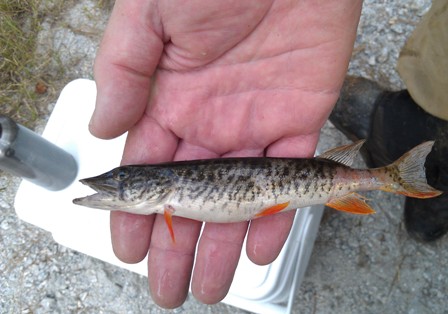


 https://www.youtube.com/watch?v=QukK4nM9OpA
https://www.youtube.com/watch?v=QukK4nM9OpA
